I don’t envy the CEO of any company.
It is an incredibly difficult position that requires the ability to juggle nitpicky board members, demanding shareholders, emotional employees, and cranky customers. With countervailing concerns and conflicting objectives, the role of the CEO requires skill at the three-Ds of leadership – discipline, decisiveness, and dignity. In my career, I have had ten different bosses – people I reported to in varying organizations: mostly good, one exhaustingly terrible, and just one who I viewed as exceptional. His name is Lars von Kantzow.
My former boss and friend Lars von Kantzow is one of those rare individuals who have mastered the art of leadership. He spent the last twenty-five years as CEO of four different companies, but I recently learned how his journey began. In asking about the history of his career, I now understand the roots of his management style and how he pulled magnetically toward growth opportunities.
Swedish Origins – A front-row seat to leadership
Of course, Lars wasn’t born a CEO, but his childhood provides some exciting experiences that helped mold his journey. As a young boy, he had several role models within his family that showed him how to be a leader. His father, maternal grandfather, and great uncle were all leaders managing different types of organizations.
Lars’s father engaged him to discuss business and even introduce him to those acquaintances. From time-to-time, his dad would invite Lars to listen in on business meetings or bring him to work. It was as if his dad wanted to groom him for a future leadership role. They would take walks together, and their conversation would frequently be about a business challenge as Lars’s curiosity emerged. Lars was always asking questions.
Lars’s maternal grandfather was a well-known business leader manufacturing and selling office equipment and furniture, and his great uncle was also a known industrialist in steel and alloys materials. He invented an alloy in toasters, which happens to be my favorite appliance.
His paternal grandfather managed a large farm involving grains and forestry management.
So, in his youth, Lars had a front-row seat to leadership. It was natural for him to become captain of his soccer team and show an affinity to being in charge. He excelled at school and was #1 in his class. Observant, diligent, and a natural leader, Lars was always ready to take on responsibilities.
Military, College, and His First Job
When Lars’s parents decided to retire in eastern France, they moved out of Sweden. He stayed behind in Sweden to finish high school and military service.
I have known Lars for more than a decade, and he never shared this funny story with me.
I don’t know why I never asked him if he had a nickname in his younger days.
When he was in military service in Sweden for one year, he earned the nickname – Ten Questions.
He was always asking his superiors to explain things because he was naturally inquisitive. An order from a superior officer led to a string of questions for clarification.
Suddenly, all that time I spent in his meetings answering a barrage of questions makes sense. I can’t recall a single session with Lars that didn’t involve him asking a thousand questions to get at the facts.
You also can’t sit through a meal without Lars having to Google the answer to some casual topic that comes up. His curiosity gets the best of him. How many medals has Sweden won in the Olympics? If he didn’t know the answer, he would check. (FYI – Swedish athletes have won a total of 494 medals at the Summer Olympic Games, and another 144 at the Winter Olympic Games).
For Lars, most topics always lead back to Sweden. He, of course, would tell me that all my trivia questions lead back to New Jersey, but that’s a story for another day.
However, when it came time for college, Lars went to Geneva, Switzerland, which was close to his parents’ new home. He earned a bachelor’s degree in business in three years, with all courses and exams in French (Lars’s third foreign language). I also learned that Lars specialized or majored in information technology. I always assumed he studied marketing. He learned how to program in Cobol – and earned a minor in finance. Now I understood the root of his bias for structure and logic.
Amazing what you can learn when you ask a question.
Procter & Gamble
When it came time to apply for his first job, he applied for positions at P&G in IT and finance. When he interviewed, the P&G folks felt that he was better suited to working in marketing. He remembers being interviewed by Kevin Roberts, who, after leaving P&G, became the CEO of Saatchi & Saatchi from 1997-2014, one of the world’s largest ad agencies.
When I asked Lars if his business degree prepared him for a job in marketing, he candidly admitted no.
“But what I learned about marketing came from working at P&G, not from college. More importantly than marketing, I learned how to function in a company. I observed the critical importance of great communications to make sure everyone was working together. Becoming a strong communicator was an invaluable leadership skill for me to acquire.”
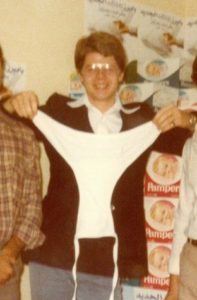 Lars initially got to work on the Pampers brand, the growing diapers business that was a market disruptor. Remember, cloth diapers?
Lars initially got to work on the Pampers brand, the growing diapers business that was a market disruptor. Remember, cloth diapers?
P&G was Lars’s first opportunity to work on a growth business, something that is a common thread throughout his career. He worked in Lebanon and Saudi Arabia. Much of his work was in marketing, but he also received five months of sales training in England around 1978. A critical leadership skill was forming as he quickly realized how important it was to work with distributors.
“When you work with partners like distributors, you need to be in a supportive role to help them be successful. You can influence and be persuasive, but you can’t dictate. It was yet another great leadership lesson because you learn the value of getting the best out of others so you could become successful at your tasks.”
Lars left after five years, but it was a cornerstone experience that exposed him to one of the world’s most exceptional marketing organizations.
Swedish Match
At twenty-seven, Lars got to join Swedish Match in a marketing role overseeing sales subsidiaries and third-party distributors and eventually becoming a key sales and marketing executive. Swedish Match was an industrial conglomerate that owned the safety match market in many different countries and has a fascinating history, especially the part about The Match King. I learned about the rise and fall of Swedish safety match tycoon Ivar Kreuger.
Swedish Match was also a large company, and Lars got to learn how to gain influence within a corporate structure, not just give orders. His role was in a matrix organization, meaning lots of people directing you in different directions.
Overtime, Lars was asked to lead a vital line extension operation. Swedish Match wanted to go beyond matches and expand into products like charcoal, fire logs, lighters, lighter fluid, and other related products. With his P&G marketing experience, his responsibility was to develop these extensions and bring them to the market.
Leadership Lessons From Failure.
The project didn’t succeed. Swedish Match’s leadership didn’t offer adequate marketing support, and there was no way to expand into these new categories. Plus, he saw the challenge of diluting a brand too thin and difficulties when you couldn’t cross-merchandise products on store shelves.
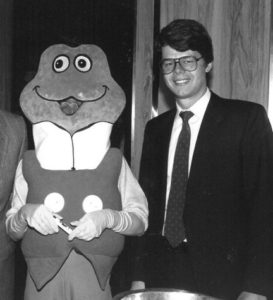 But another opportunity emerged as the company moved into disposable lighters as they could see the disruption of the match business. Swedish Match purchased a French lighter company with some international presence and expanded it. Lars came in to grow the Cricket lighter line that was owned by Gillette. Eventually, Swedish Match bought the Cricket brand from Gillette, and Lars was appointed head of disposable lighter sales and marketing in North America.
But another opportunity emerged as the company moved into disposable lighters as they could see the disruption of the match business. Swedish Match purchased a French lighter company with some international presence and expanded it. Lars came in to grow the Cricket lighter line that was owned by Gillette. Eventually, Swedish Match bought the Cricket brand from Gillette, and Lars was appointed head of disposable lighter sales and marketing in North America.
Lars came to the U.S. in the 1980s to manage the integration of the Cricket brand into Swedish Match. First, in Boston, then St. Louis, he became President of the U.S. disposable lighter business. It was a vast learning experience. The critical leadership lesson was how to turn around a hostile work situation into a win/win for everyone. He avoided “burning his fingers” on what could have been an explosive situation.
“Another valuable leadership lesson was observing how a non-adversarial, consensus management style could make the difference between success and failure. It is a lesson that stuck with me throughout my career.”
Back to Sweden
Eventually, Lars was offered a new position in Sweden with Swedish Match, so he and his family returned to his homeland. With this job, it was his first time working in his beloved native country.
Tasked with running a manufacturing operation for flexible packaging for the food industry, he got to manage almost 400 people in this Southern Swedish facility. After doing this job for one year, he got restructured as the organization put one person, not Lars, in charge of all three facilities.
But as the saying goes, when one door closes, a window opens. Or, in this case, it was flooring.
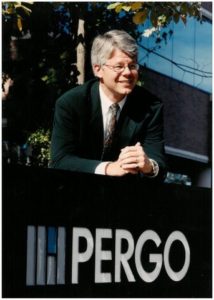 Recruited to Pergo, Lars became the VP of Sales and Marketing for a disruptive laminate flooring company. He had responsibility for their business in Scandinavia, Europe, Asia, and eventually, the U.S. Once again, a growth opportunity emerged and, yet another example of a disruptive product challenging an established category. Over time, he became CEO of Pergo.
Recruited to Pergo, Lars became the VP of Sales and Marketing for a disruptive laminate flooring company. He had responsibility for their business in Scandinavia, Europe, Asia, and eventually, the U.S. Once again, a growth opportunity emerged and, yet another example of a disruptive product challenging an established category. Over time, he became CEO of Pergo.
In 1993, Pergo started selling to the U.S. market as an export. The U.S. market expansion was his pet project, and he soon realized how big the growth opportunity would be.
Back to The U.S.
In 1995, Pergo moved its worldwide HQ to the U.S. so that Lars could oversee both the company and the new expansion in the U.S. Pergo came to the U.S. with thirty million dollars in revenue (through export). Over time, Lars focused on the U.S. market as CEO handing the reigns back to the former CEO for the global business.
Once again, Lars found another growth opportunity in his professional journey. He built the business from a greenfield to close to $300 million in revenue—a remarkable feat.
Everyone I knew who worked at Pergo often described it as an outstanding workplace, filled with the type of culture we all seek. There was a balance of hard work, growth, and fun. People rallied around the vision and were excited to be challenging the status quo in the flooring industry.
“I always admired the Jim Collins’s book, Good to Great. I think getting the right people on the bus is job one. Then, fine-tuning the strategies and the paths forward. As a CEO and leader, inspired by Collin’s ideas, and I used some of his thinking to help guide my leadership style.”
Nomacorc
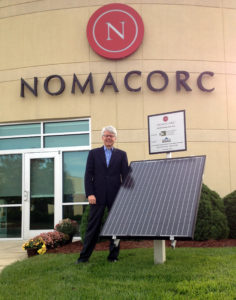 In 2002, Lars left Pergo and started a consultancy that included branding and other business management needs. He did this for three years.
In 2002, Lars left Pergo and started a consultancy that included branding and other business management needs. He did this for three years.
It was in 2002 that he and I first spoke as I, too, had been running a marketing consulting firm for several years. It was a chance conversation, but I remember the call.
I don’t know who made the connection, but it might have been our mutual friend Ron Doggett, who had purchased our bakery business. Ron knew Lars since Pergo’s facility was in Garner, N.C., not far from the Slim Jim plant.
In 2005, another exciting growth opportunity appeared. And, like the rest of his journey, it involved another disruptive product into a new category – wine packaging closures.
Mick Dannin from Noel Group was searching for a CEO to replace Marc Noel, the Nomacorc founder who was growing his synthetic wine cork business in Zebulon, North Carolina. At the time, Nomacorc was selling a billion corks. It needed an experienced, focused leader who understood growth, international business, and how to put better management processes in place. The fact that Lars is fluent in French was an added benefit, given that Nomacorc’s European plant is located in the French-speaking part of Belgium, and France is the single largest European market for the company. Little did he know upon graduation from the University of Geneva how beneficial this knowledge would be later in his career.
Lars was able to bring his unique leadership style involving his collaborative method of management. Like in his military days, he asked many questions to get to the essential facts of each situation.
Over the time we worked together, Lars led Nomacorc’s growth to 2.3 billion corks (or corcs as we called them) sold globally and approximately 13% share of the wine closure market.
I got a front-row seat watching a successful leader build, motivate, and empower a team to do some amazing things.
Leadership and Dignity
I will always remember that when my father passed away in August of 2009, Lars came into my office and asked me to tell him about my father. He patiently listened as I told him about my father, his business career, and the special man I lost. Lars had plenty to do – but nothing was more important than listening to me for more than an hour.
That simple act of kindness will stay with me my entire life. It was one of the most meaningful experiences I had at Nomacorc.
Effective leaders recognize that all employees want to be seen, understood, and acknowledged. I think being self-aware in a CEO is unusual.
For about five years from 2010 -2015, I reported to Lars as the Global Director of Marketing at Nomacorc. The company was an industry disruptor challenging the almighty natural cork industry for dominance.
As a member of his management team, I had a first-hand seat to watch the challenges and struggles of Lars’s corner office. In good times and bad, I often observed a leader who knew when to be firm yet also knew the right time to be compassionate and caring. I admired his disciplined approach, but he was always willing to pivot quickly when there was substantial evidence to move in a new direction.
Witness to Leadership Excellence
One of my favorite characteristics of Lars as CEO was that he strove to be consistent in how he treated everyone. When I’d walk through the plant with him, he knew everyone’s name and never missed a chance to shake a hand or pat someone on the back. I’m sure throughout his career, some people felt slighted or didn’t like the actions he took. But overall, I witnessed a consistency in attitude, approach, and action. I observed respect for the dignity of work.
As my 92-year-old Jewish mom would say, he is a real mensch. A mensch is Yiddish for an exceptional person.
I didn’t agree with all Lars’s decisions, but I respected that I could always present a contrarian perspective, and he listened. Sometimes I changed his mind, and other times he had more information on a matter than me. Most of all, I appreciate how he challenged me to become a better marketing professional.
And for that, I’m eternally grateful.
Greenlight
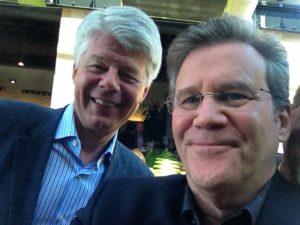 Lars gave me the green light on one of my favorite marketing activities called The Wine Marketing Exchange. We assembled the most exciting marketing speakers, from different industries, to speak with wine marketing professionals from California. This non-commercial event allowed us to bring value to our industry and to build connections with current and future customers. As I outlined the strategy, he saw the opportunity and provided the resources for me to achieve our objective.
Lars gave me the green light on one of my favorite marketing activities called The Wine Marketing Exchange. We assembled the most exciting marketing speakers, from different industries, to speak with wine marketing professionals from California. This non-commercial event allowed us to bring value to our industry and to build connections with current and future customers. As I outlined the strategy, he saw the opportunity and provided the resources for me to achieve our objective.
After leaving Nomacorc, now called Vinventions, in 2015, Lars became CEO of another Noel Group company called Nomaco. Once again, he brought his leadership style and cultural imprint to the manufacturer of engineered foam. During his time at the helm, he helped guide the development of a new disruptive product called Herculean, a structural foam. I had another front-row seat as I was a fractional marketing leader during this period at Nomaco. Lars left Nomaco and retired from day-to-day corporate life in December 2018.
Disruption Patterns – A Common Thread
As Lars has shared his career path with me, a pattern emerged. It appears that with each new venture, he was always getting into a replacement or disruptive business. Although he didn’t purposely pursue this path, in hindsight, you can’t miss the pattern.
He wasn’t seeking disruptive products per se but guided by growth opportunities that happened to involved substitution products.
- Disposable diapers replacing cloth diapers
- Disposable lighters from traditional matches
- Laminate flooring from conventional wood flooring
- Synthetic corks from natural cork
Isn’t it interesting how, when you look back at your career, it all makes sense?
Five Leadership Lessons Learned
I asked Lars how he would describe the significant lessons he has learned from his journey. He gave me five essential leadership lessons.
- TEAMS: I never liked the idea of people first. I believe in the power of cross-functional groups to achieve great things. Great people matter, but teams grow businesses.
- COLLABORATION: A collaborative, consensus style allows you to be more deliberate in making decisions. It doesn’t slow things down but will enable you to build confidence in decision making, often producing better decisions, and ensuring a faster implementation.
- DIVERSITY: Cultural and gender diversity at work are invaluable. When you can bring people together from different experiences, you can leverage the best thinking that goes beyond nationality and departments. I like to celebrate the differences in teams because it helps them do even better work.
- PERSISTENCE: Perseverance is the key to be a leader. If you can keep pushing every day, great things happen over time. A leader needs to bring unbridled energy to work. As Jim Collins calls it in his writing, you must keep pushing the flywheel forward, providing forward momentum.
- CURIOSITY: By asking a lot of follow up questions, you can guide the momentum of a team forward. Someone must keep pushing others to excel. What better way to advance an organization than by always asking questions? Lars used pointed questions to get at the truth and to challenges, stale assumptions holding back growth.
The Next Chapter
Today Lars is doing some consulting, working on some boards, and until recently playing a lot of tennis. A recent hip replacement temporarily took him off the courts, but if I know Lars, he’ll be serving again soon.
He is also enjoying more time to be with his three granddaughters, two in Sweden and one in North Carolina.
I wonder if someday soon, he will be grooming them too for their journeys as leaders.
Looking for a marketing advisor to help you grow your brand? You can set up a time to chat with me about your marketing challenges using my calendar. Our initial conversation is free. You talk, I listen. Email me jeffslater@themarketingsage.com or call me. 919 720 0995. Visit my website at www.themarketingsage.com Let’s explore working together today.
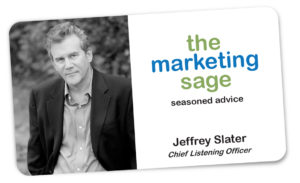
Photos coutesy of Lars von Kantzow




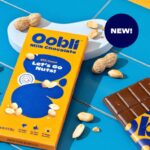
I worked for Pergo for a few years as Product Excellence Manager, focused on Quality and new product introductions from Sweden and was interviewed by Lars for the position. I agree with the story posted and as Lars did, I also ask lots of questions. Still working and run HR / Safety for Gate Precast Company in the local RTP area.
Why do we allow people like Lars to retire? They should continue to turn parts of the world around and certainly find ways of commenting on business and world affairs. Society needs sane and sage voices more than ever. I look forward to reading his blog – I hope one will appear in the future. This may prove to be a challenge, but judging from his well-presented life story, he enjoys them.
OK, he may be granted occasional time with his wife and family and some sports activities.
I wish Lars a continued great journey. Have I ever met him? Well, he is a great friend since way back and my cousin. By the way, I benefitted from his advice and his family’s hospitality when I many years ago had a project with Ericsson mobile communications R&D HQ in Raleigh, N.C.
Johan
Thanks for your note and comment on my story about Lars. I agree that people like Lars continue to have valuable lessons to contribute.
Jeff